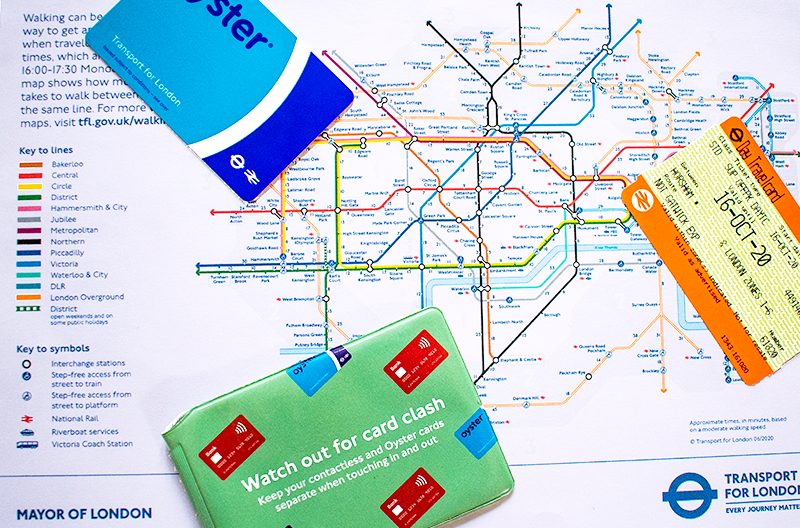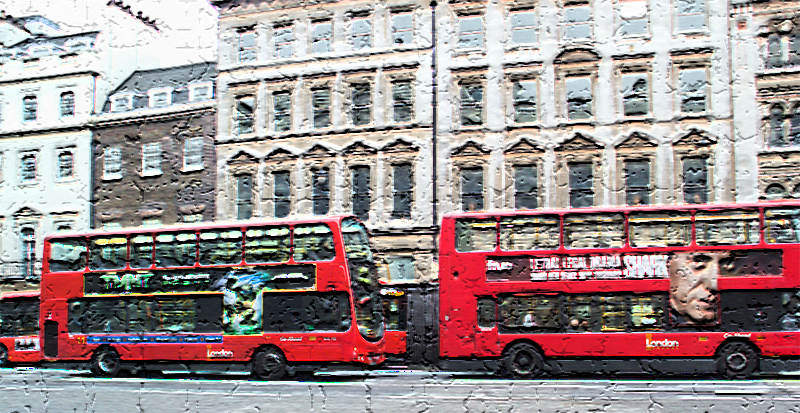GETTING AROUND LONDON
THE TUBE
London has the largest public transport network in the world. There are 10 main rail stations (Waterloo, Paddington, King’s Cross, St Pancras, Euston, Charing Cross, Victoria, London Bridge, Fenchurch Street
Liverpool Street) there is the overground, TFL rail, DLR, tram line, buses and of course the tube. The quickest way to travel in London is, without doubt, the tube, one of the most distinctive elements of London. There are 11 lines with over 270 stations. The London Underground was designed in 1931 and in my opinion, is one of the best and simplest underground maps, very easy to understand. London’s tube is the world’s first underground railway to be built, with the opening of the Metropolitan Railway between Paddington and Farringdon Street on 10 January 1863. But enough with data and history!
GET STARTED
WHICH TICKET?

If you are planning to stay a few days in London the best option is to buy the Oyster card, which is a pay-as-you-go smart card. You will top it up with money and use it as long as you have credit on it. The Oyster card is cheaper than a day Travelcard or single tickets, as fares are usually capped, so there is a maximum amount that you pay every day. Usually, it is about 6 £ (prices are likely to increase). You won’t be paying more than that if you make multiple journeys in one day.
OYSTER CARD
You can purchase your Oyster card at any Tube or overground station (machines or ticket offices) and in many newsagents in London. If you live in the UK you can also buy it online. In order to purchase an Oyster card, you will have to pay a 5 £ activation fee. This fee used to be refundable if you didn’t need the Oyster anymore. You would simply return the card and get the 5 £ back. However, this has recently changed and if you got your Oyster card after 23 February 2020, it will be refunded automatically as pay as you go credit after one year when you make a journey with your card. If you have remaining credit for £10 or less, you can get it refunded at a Tube station ticket machine.
VISITOR OYSTER CARD
You can also buy a Visitor Oyster card, which works in the same way as the Oyster card plus it gives you some exclusive discounts at some leading London shops and restaurants. You can only buy it in advance online and it will be sent to you by post. If you are going to stay in London for 7 days, it might be better to buy a 7 days Travelcard. Another option you could go with is to buy the London Pass, which gives you access to over 80 attractions and includes travel as well. The choice depends on the length of your stay and the pace you want to keep in visiting all the attractions.

KEEP IN MIND…
Consider that usually, all main attractions, open at 9 am ad close between 5.30/6 pm with the last entry usually one hour before closing time. You should also consider the price of the attractions you want to visit as the London pass might be more expensive than buying each ticket separately. You can find all the information you need on tickets, fares and travelcards on this website: https://tfl.gov.uk/fares/how-to-pay-and-where-to-buy-tickets-and-oyster/buying-tickets-and-oyster.
…AND YOU ARE READY TO GO!
Once you have your Oyster card topped up you are ready to go, this will be your key to travel in LondonLand :). You can travel on the Tube, overground, buses, most TfL Rail stations, and Some DLR stations. Just tap your card on the yellow card reader before and after your journey.
